
| [ Ramón Ribó's dream audio equipment ] |
Last November 27th we could assist to an unequal audiophile experience. Just imagine where we were. A dedicated 90 m2
audio room (Ramón calls it the Auditorium), an incredible audio equipment and a audiophile called Ramón Ribó who opened the doors of his home to share with us some incredible hours listening to their installation.
Lets go step by step. Joan Maeso Lorenzo -a friend who is subscribed to the audio forum created and manteined by Modesto Garrido- told me that his friend Ramón has an unequal equipment and audio room. Ramón was inviting us to an "audio day" at his home to see and listen to that installation. An offer like this could not be refused so we accept his kind invitation.
Ramón Ribó is an audio professional working in this field for more than 25 years. His interest for the music began were he was a child, while he was at school, when he began to study music. His interest for high-end audio equipment began when he was 30 years old. Then he had a Thorens TD 124 TT, Quad electronics and Bowers & Wilkins Loudspeakers. Since then many things have happened, new technologies, new audio components and as he said "this will continue in the future". After his beginning as amateur, Ramón decided to began a professional career dedicated to high-end audio. He established Amadeus in Barcelona, one of the first high-end shops in Spain, where all the audiophile community could found the best advice on high-end audio. Two years ago, Ramón moved their bussines to Santes Creus (30 km away from the city of Tarragona and 100 km from Barcelona) where he continues his work offering their knowledge and advice to everybody interested in high-end.
All along these years Ramón has been importing to Spain the finest high-end products available in the market and he has been an audio pioneer. He offered in 1990 the first Audio-Video demonstration in Spain (Ritz Hotel, Barcelona) and in the beginning of the 80s he began the debate about the diferences produced in the sound by interconnects and cables "debate that is still present today, but very distorted due to economic interests" in his sown words. In 1994 he introduces the Amadeus range of high-end products: a pre-amplifier, four loudspeaker models called Mizar and an attenuator with extraordinary specifications (a world premiere).
As you can see this is a very successful career in audio world. Just as an example, let me say that Ramón has more than 5000 customers, including world famous persons related to music: singers, choir and orchestra directors, etc. One of the most importants things I saw at Ramón's place was his warm welcome to us, so I understand the reason why he has had this success in the audio world.

In his house at Santes Creus, Ramón built his life's dream, in fact the dream of every audiophile all around the world, an astonishing dedicated listening room. Ramón describes it with these words:
"The room has 90 m2 and 400 m3 (the exact measures are 11,50 x 7,60 x 4,60 m) and it is dedicated exclusively to musical reproduction. All the elements in this room has been studied to get the maximun degree of fidelity while playing music. The concrete composition to build the walls, its width, the acoustic treatment for the floor and the roof, the little and almost invisible irregularities, the 3 tons concrete block (decoupled from the house foundation) used as platform for all the analogical and digital sources and preamplifiers, the reflection and absorbing systems (simples and almost invisibles) tuned to get a reverberatioin time of 0,52 seg. in all the frequency range (ideal for a listenig room, not for a recording room)."
Ramón believes that "the listening room is the most important thing to get a good musical reproduction...and the most expensive. In a well conditioned listening room a mid-quality audio equipment will give more satisfaction than a high-end audio equipment in a bad conditioned listening room.
I must say that the results are really impresive and you can see what I'm saying in the next two images.

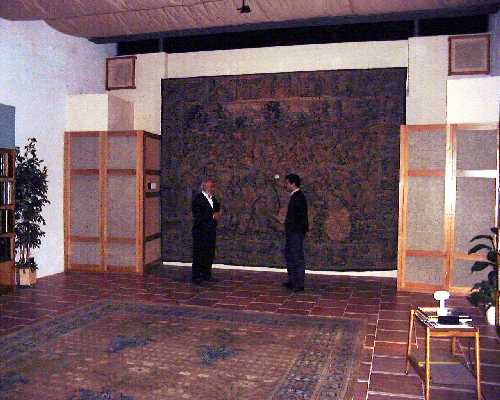
In this wonderful environment Ramón has his record collection, more than 12000 records, mainly classical and opera. With some of this records we could check the quality of his installation. Let's describe his audio equipment:
As you can see all the components used in this system are top quality. Ramón is specially proud of the OmniDrive BSS FDS-388 active filters, that he controls using SounBench software with his computer: "With this device I can control, in real time and with absolutely precision -it is a digital filter- with what frequencies, at what level, in what phase and with what changes in the response curve, is sent the audio signal to the power amplifiers, from which the signal is sent -without any passive component (!!!)- to the speaker. Ramón says that "...only for this reason I would recommend the use of this kind of filters, given that this means an incredible improvement over passive components (capacitors, resistors, coils, etc) and it brings a lot of benefits: dynamic improvement, fastest response, microinformation, etc, etc.
With this system, Ramón can choose between different preset configurations or create new ones, as many as he wants, until find the one best suited for every recording. The number of possible combinations is infinite and he can store 60 of them to use in a future.
As you can see Ramón defends the signal equlization at home using this kind of active filters:"The signal re-equalization at home is necessary. In fact all the objective and subjective factors are against the use of a "pure" signal. From the recording process to the moment of listening. Then is when the audiophile must use their ears to get a fine reproduction using this method...".
He also considers that trying to change the sound with passive elements like cables, capacitors, etc is "something from the past, when we haven't any better choice to modify efficiently the musical signal . And he says this because he has tried this kind of devices for a long period of time. His conclusion is that instead of spending a lot of money and time with such things, it is better to use active filtering: "All these audiophiles that spend a lot of money in high-end components and after that try to modify the sound using cables are wrong. It is frustating for them because cables are not intended to equalize the signal (altougth they modify the signal). The best way is active filtering.
I must admit that the active filtering used by Ramón works perfectly.
Here there're some images of the audio components described above. You can zoom in the images clicking on the rigth button of your mouse on it and selecting "show image". You can also download them using "save as" option in the same menu.
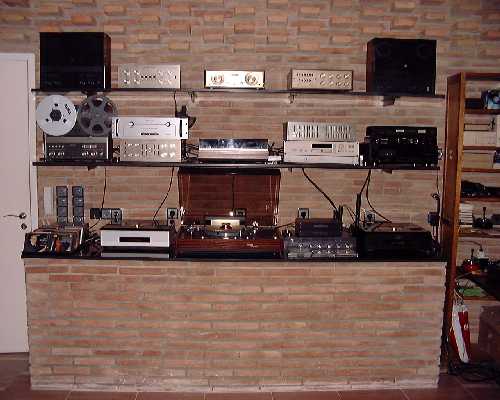 |
 |
 |
|---|---|---|
 |
 |
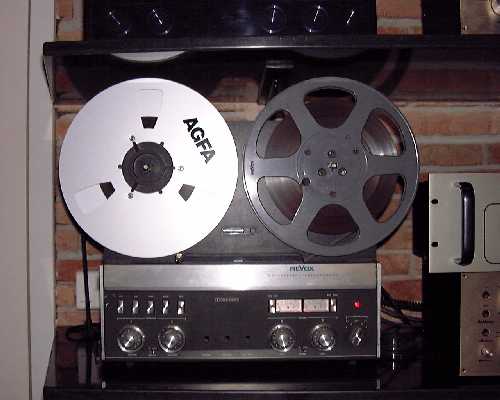 |
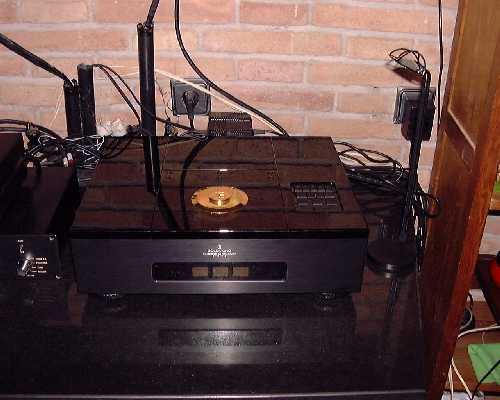 |
 |
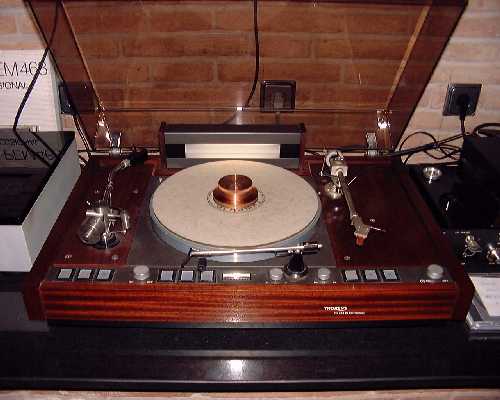 |
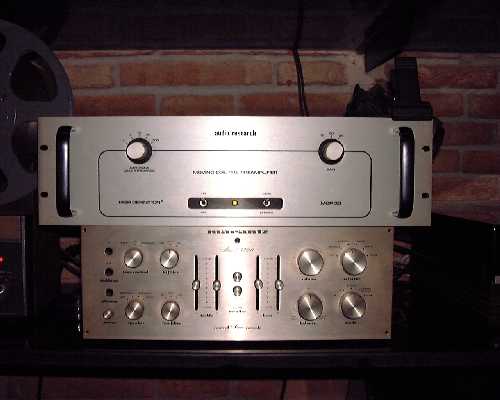 |
 |
 |
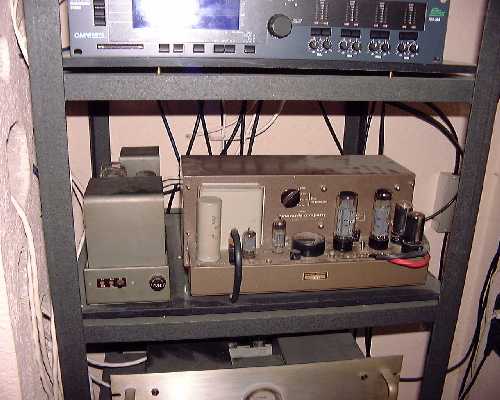 |
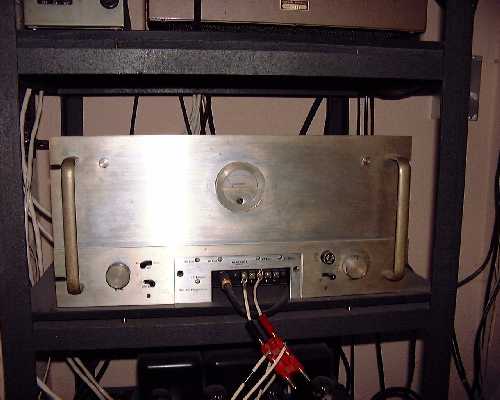 |
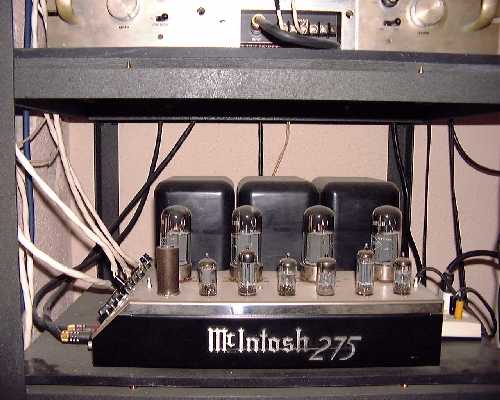 |
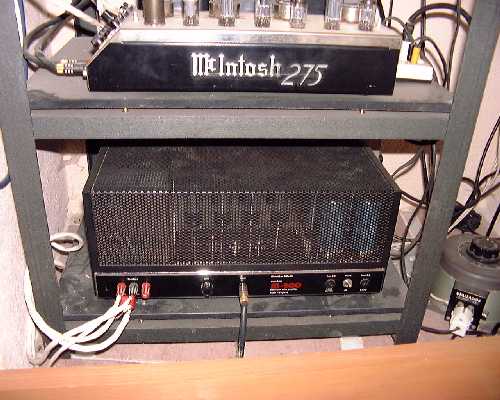 |
 |
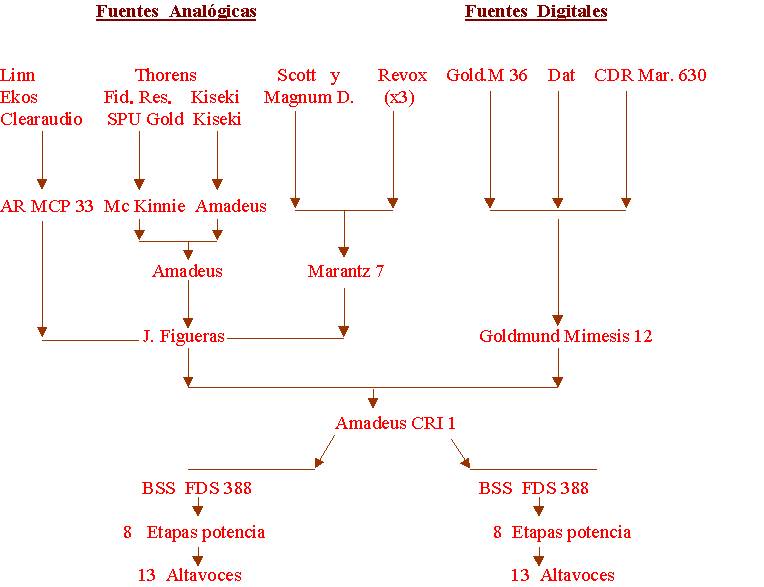 |
In this context we spent all the saturday enjoying with the records we play. We began playing some jazz (Joan and myself are jazz fanatics) .We compared CDs with LPs and we concluded that LPs sound is better than the CD sound (go for vynil rigth now!). We tried Oscar Peterson's Trio recording "The Trio Live in Chicago" both in CD (Verve special edition 20 bits recording) and the original recording from 1956, and the LP beated the CD in every aspect. We also enjoy a lot with another recordings from Bill Evans, Coltrane and Hartman, Crosby, etc. In every track selected the sound we get from the equipment was so, so real, that we expected to see the musicians playing in front of us.
In the evening we select some classical tracks and operas from Ramón's record collection. With these kind of tracks, where big orquestras and chorus are the rule, is where we could felt the whole potential of the equipment. Really astonishing! Truly high-fidelity, veru high. And without fatigue for our ears. What can I say. You should be there to understand what I'm saying. I remember a very low frequency coming from the subwoofer that was absolutely clear. That's what I call "going down to hell".
And that's all. We spent a fabulous day with Ramón, listening, learning and sharing experiences that taked us to the audio nirvana. My last words dedicated to Ramón for his warm welcome and for his time. And hoping to repeat the experience as soon as possible.